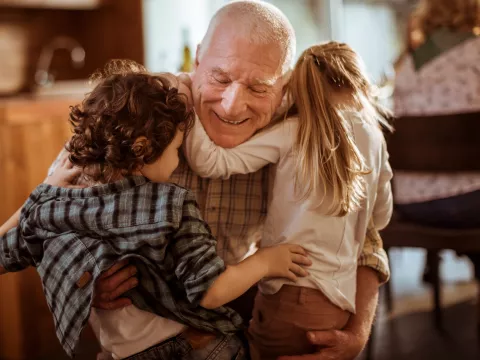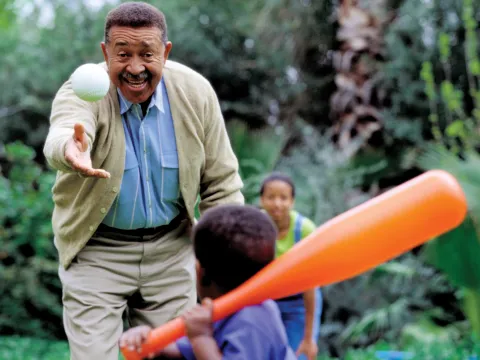- AdventHealth

You may have thought your heart couldn’t grow any fuller the day you became a parent. And then your baby had a baby — and suddenly, becoming a grandparent means feeling a whole new kind of love. To be a grandparent means you get to experience the perks of parenting all over again, only this time, you can pass the little ones back to mom and dad when you’re ready.
Cookies? Check. New toys? Check. Baby Gates? Hmm.
Keeping your grandchildren safe while they’re with you is also (hopefully) at the forefront of your mind. Although you have experience raising kids, it’s probably been a while since you took care of an infant or child. Plus, many of the safety guidelines you followed with your own children may have changed.
Childproofing Your Home
Before your little loves come to visit your home for the first time, take a look around and ensure all areas are ready for a safe visit. The steps in SPEGOS will help you to remember some of the most important elements:
Smoke Detectors
Check that they’re placed in proper locations throughout your home and are functioning.
Pets
Teach your grandkids how to stay safe around household pets. Kids should know to not pet a dog or cat while sleeping or eating and not tease or taunt them. If you have pets that don’t behave well with kids, keep them separate. Store pet food and treats in places kids can’t reach.
Escape Plans
In case of a fire or emergency, have a clear plan.
Gates
Place them at the top and bottom of stairs.
Outlets
Cover outlets to prevent an electrical shock.
Soft Covers
Position covers or bumpers around sharp furniture to prevent bumps and bruises.
Brush Up on Child Safety
If you’ve saved cribs, playpens, toys, strollers or other items that your own children used, they’re probably no longer considered safe. Replace them with new models that meet current safety standards. Seal your cabinets with “kiddie locks” and move any dangerous chemicals in your home — such as those used for cleaning, gardening, treating your pool and even medications — out of little ones’ reach.
Sleep time and traveling can also call for added safety measures. To keep everyone happy and healthy, at bedtime remember to place infants to sleep on their back to prevent sudden infant death syndrome (SIDS). Remove blankets, stuffed animals and bumpers from infant cribs.
Before taking that trip to the mall, buckle up. When taking your grandkids in the car, make sure you have proper car seats. Children should remain in a rear-facing car seat as long as possible, until they reach the highest weight or height allowed by their seat. This same rule applies once kids start using forward-facing car seats with harnesses. And for children who exceed the weight or height limit for their car seat, use a booster seat until the vehicle’s lap and shoulder seat belt fits them correctly.
Health Care for Children
In the event of an emergency, AdventHealth offers pediatric emergency and urgent care with specially trained physicians, nurses and child-life specialists dedicated to providing little ones with the best possible care.
Keeping kids and their families calm during an emergency is as important as offering expert care, so our kid-friendly emergency rooms are designed with pediatric patients in mind. Rest assured, even if your grandchild has an accident on your watch, they’ll be well taken care of in our hands.
Learn more about children’s care with AdventHealth here.




